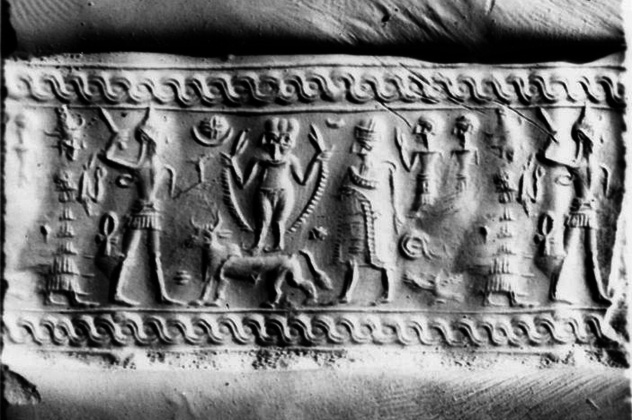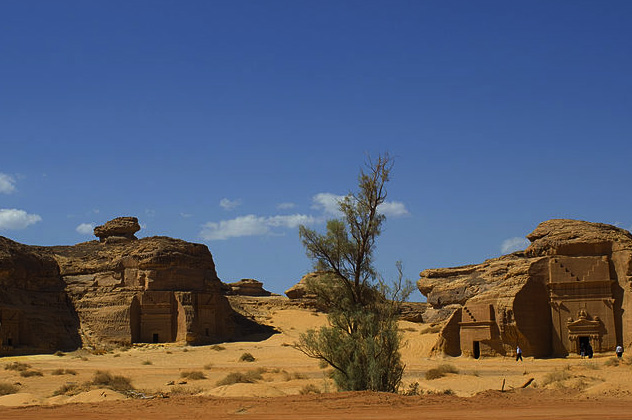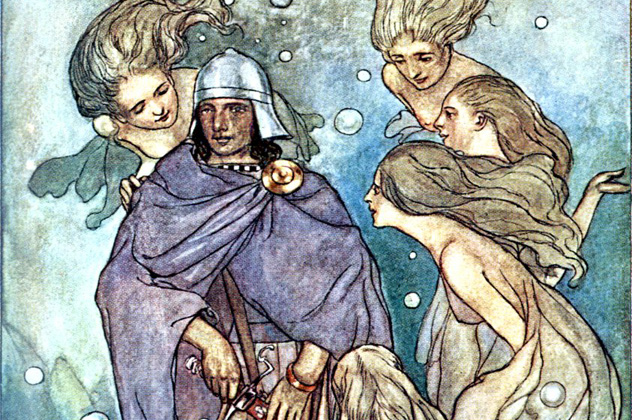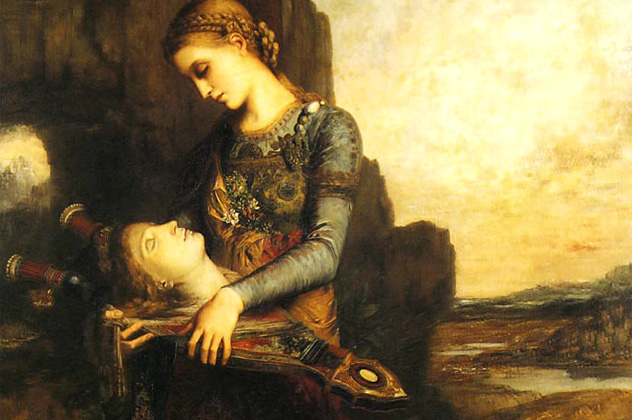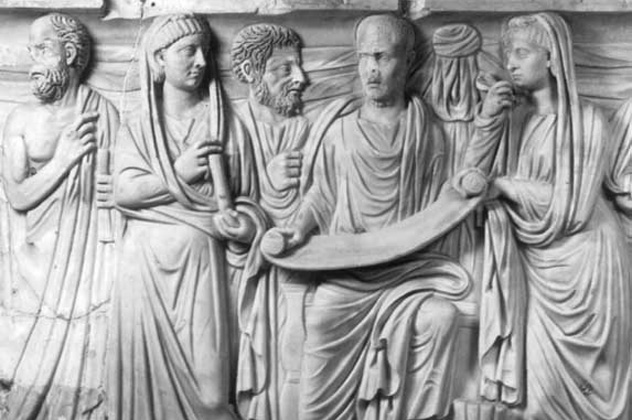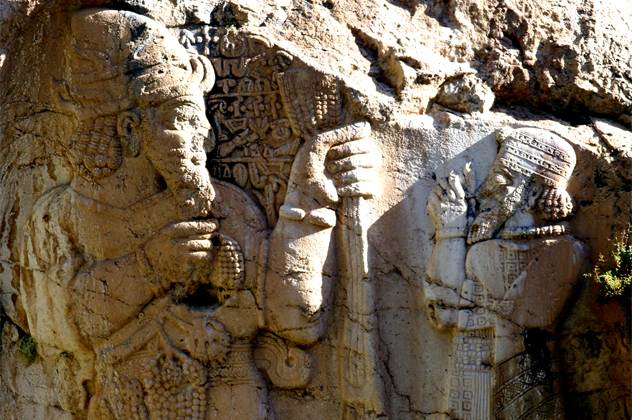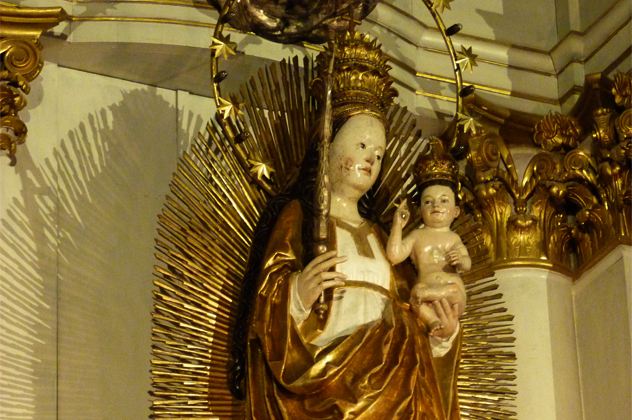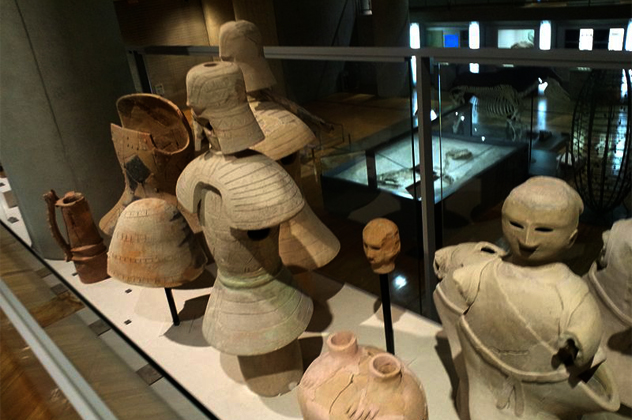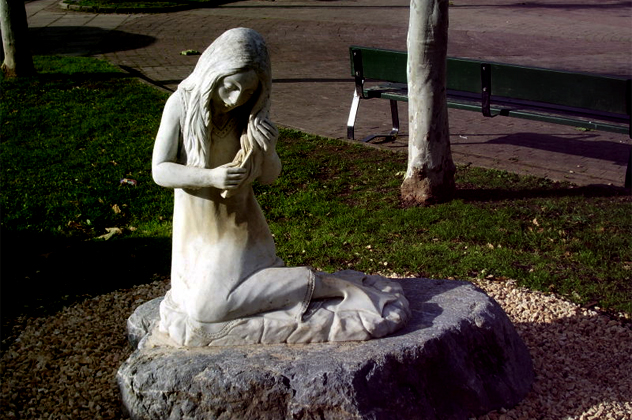10The Ancient Mesopotamian Religion
Sumerian cuneiform is believed to be the earliest form of writing, and the Mesopotamian religion is the oldest in written history. It had a pantheon of over 2,000 gods that had to eat and drink—and often drank too much. Divine banquets were held where it was believed that royalty and the gods interacted over the feast. During one such banquet, thrown by the high god El, it’s said that the chief deity drank to the point of slurred drunkenness, for which he was chastised by an apparition and stricken with diarrhea and uncontrollable urination. Judging from that—as well as another deity who got angry at a maidservant’s lewd behavior at said banquet—we can safely say that the Mesopotamian gods knew how to party. In Babylon, one of the more interesting practices was temple prostitution. Although the particulars are a matter of debate, some scholars believe that, in ancient Mesopotamia, prostitution was sacred and sex was a natural force that benefited mankind. The cult of Ishtar, another Mesopotamian deity, recognized sex as the embodiment of its goddesses’ power and—for the right price—offered lots of it in her temples.
9The Pre-Islam Arabian Religion
Eventually put down by Islam, the indigenous religion of Arabia included many local deities and one chief god, Hubal, who reigned over them. Prior to Muhammad seizing control over it, the Kaaba in Mecca (the pilgrimage spot for modern Islam) housed the images of several hundred such gods. According to Islamic belief, the structure was originally built by Abraham, but its keepers later placed the numerous other idols inside. Hubal especially seemed to have been a preoccupation for them, as they are believed to have indulged in divining by casting arrows before his golden-handed idol. After seizing control of the Kaaba, however, Muhammad expelled the idols from the site. Arabia’s indigenous religion valued poetry and story. Poets were respected because their works were believed to be of divine origin. According to the belief system, poems were inspired by djinn, or spiritual beings, and their magic flowed through the mouth of the poet. The love of words can still be seen in the Arabic writing system, which was carefully developed with special attention given to pronunciation in order to accurately preserve the spoken word.
8Celtic Mythology
Many of the details of the various Celtic religions have been lost to time, and most of what we know about them has been clipped from Christian or Roman sources. There are plenty of variations in the religious practices of the individual Celtic tribes, and it’s hard to patch together the pieces into a coherent picture. We do know that bogs and marshes were considered sacred, and valuables were often sacrificed in the murky waters. The druids presided over such ceremonies, but very little is known about them except for their extremely powerful influence on the Iron Age Celts. That same influence led to the lack of modern knowledge regarding them, however, as the Romans tried to stamp them out after they seized control of the island. Some sources remain, though, and we do know of a number of gods that the ancient Celts worshiped. The high god was the Dagda, renowned for—among other things—his enormous penis and potent sexuality. Despite being portrayed as rough and ill-mannered—even leaving his genitals exposed on occasion—he mated with several female gods, once even ensuring victory for his people with his sexual escapades.
7The Ancient Slavic Religion
The somewhat loosely knit indigenous Slavic religion was characterized by its worship of many-faced gods and its nature-centric rituals. There were many gods with many heads, each representing a different aspect of the god’s power. One major deity, Svantovit—a possible candidate for a supreme god—was at once both god of war and fertility, and in some records had both male and female heads. As with many lost religions, however, most knowledge of the ancient Slavic pantheon disappeared with the arrival of Christianity—although Christianity also introduced writing to the formerly orally-based culture, which is how we know about its beliefs at all. Worship of Slavic gods continued after Christianity’s arrival, but over time the local gods began assuming the faces of Christian saints. Eventually, the original beliefs were swept under the floorboards of the Church and largely forgotten. Parts of the indigenous Slavic religion have, however, left their mark on Christian holiday tradition. The ancient religion might have gotten lost within the robes of Christianity, but some practices underwent very little change. Painting eggs for Easter, for example, is believed to come from the festival honoring Jarilo, the Slavic god of vegetation and fertility.
6Orphism
Orphism, so called because its beliefs were contained in religions poems composed by the musician Orpheus, sprang from Greek mythology. It centered around an alternate version of the creation of man that had Zeus fathering a child with his daughter Persephone. The child was named Zangreus, and Zeus intended to make him ruler over the other gods. The Titans, however, grew jealous of the future leader and devoured him before he could take his place over the pantheon. Zeus smote them with a thunderbolt in his anger, and from the ashes were born the first humans. According to the tradition, man inherits the divine soul of Zangreus, but the devouring of the god is similar to an original sin. Man must live out several life cycles of reincarnation before being purified and reborn into bliss in the other world. The followers of Orphism had a number of taboos, many of which stemmed from their belief in reincarnation. Meat eating, for example, was prohibited because it was eating another being. Wearing wool was also prohibited, though that was part of a larger belief system shared by several of its religious contemporaries. Pregnancy was also discouraged, as it was viewed as the imprisonment of another soul in a human body. Orphism’s strict taboos made it a hard sell for many, which might have influenced its eventual disappearance.
5Neoplatonism
Based on the works of Plato, Neoplatonism was largely created by the scholar Plotinus, who sought to correctly interpret the ancient sage’s writing. Followers of Neoplatonism believed in “The One,” the source of all life. The One was not considered a being but rather an existence beyond all understanding. Neoplatonism held that matter (the physical world) separated us from The One and was thus evil, but only in a metaphysical sense since matter also sprang from The One, the source of all. Neoplatonists also believed in a world-soul, an intrinsic connection between all living things on the planet. All humans, and even plants, contained souls, but those souls were not wholly imprisoned within their physical bodies. It was believed that part of the soul resided in the body while the other part retained its connection to the greater world-soul that encompassed all living things. Neoplatonism stressed that that higher plane should be the focus of contemplation, not preoccupation with the physical world that some souls descend to.
4The Hittite Pantheon
The Hittite religion called itself the “religion of 1,000 gods” due to its large number of deities, many of which were only worshiped by individual villages. There were hundreds of local gods, many of whose names have been lost and are now only known through images. The Hittites were quite open with their pantheon, both recognizing and even adopting some foreign deities. Despite the vast number of gods, though, several appear to have reigned supreme. The chief gods were a thunderbolt-hurling sky god, quite similar to Zeus, and his wife, a mother goddess revered as his equal. The Hittite religion appeared not to have discriminated between genders. One of its myths is the “vanishing” god of agriculture who leaves the Earth for a time and causes a period of scarcity, much like the story of Persephone, Demeter, and Hades. As the text is incomplete, it isn’t known why the god leaves except that he was angered for some reason. After numerous gods attempt to find him, the mother goddess succeeds by sending a bee into the fields. It finds him and stings him to wake him up, then the other gods appease him with gifts to restore the world to its previous state.
3The Ancient Hungarian Religion
Little is known about the ancient Hungarian religion. A good deal can, however, be retrieved from existing Hungarian folklore, such as the belief in an upper, middle, and underworld supported by a “sky-high tree.” There were several gods, including the evil Ordog, and Boldogasszony, who was originally a Hungarian goddess but whose name was later transferred to the Virgin Mary on the advice of a Christian evangelist in Hungary. What is known about the Hungarian religion, though, is the importance of its shamans, the taltos. They could climb the sky-high tree and act as a conduit for the gods. Shamans were chosen by birth defects—those born with minor abnormalities like extra digits and natal teeth were believed to have been part of the divine order. The shaman had a wide range of powers, from communicating with animals to superhuman strength. Interestingly, while the religion from which the stories sprang has been lost to time, there are still practicing taltos today who keep both the old folktales and the ancient customs alive, though some have begun to adopt shamanistic practices from other cultures as well.
2The Pre-Shinto Japanese Religion
Prior to Shinto’s establishment in Japan, it seemed that the Japanese religion was shamanistic. There are numerous tales and records of a half-mythological empress, Himiko (or Pimiko), a shaman who bewitched her people and practiced divination by burning bones. At that time, Japan did not have a formalized writing system, so what we know of early Japan comes from Chinese sources and archaeological evidence. Numerous burial mounds have been found that belonged to the wealthy and influential. The mounds are covered with sculptures called haniwa, which archaeologists believe represented the deceased’s servants and possessions—or perhaps their guardian spirits. Without written records, no one can be completely sure. The practice of placing representations of possessions is believed to have been taken from China, somewhat like the famous terra-cotta army. Regardless, the death rights and funeral practices recorded by the Chinese show a large concern for the afterlife in pre-Shinto Japan. Later records show Japan’s prehistory religion slowly developing into Shinto, particularly its imperial family’s claim to divine ancestry. Though records are scant, it’s clear that Japan’s king at the time considered himself a relative of the gods. One Chinese document shows him claiming to take care of all official business before dawn, then handing the affairs of state over to his younger brother, the Sun, once he had taken the sky. Certainly it’s one of the more imaginative excuses we’ve heard to get out of work, and the ancient Chinese emperor would seem to have agreed, calling the practice “extremely senseless.”
1The Ancient Basque Religion
The ancient Basque religion had several deities, but centered on a “Great Goddess” named Mari. She was seen as both a kind, compassionate goddess and a wrathful, destructive one. She could just as easily deal out lawful judgment to the wicked as well as cause violent hailstorms for no apparent reason. A subterranean goddess, ancient Basque believed that her underworld home was a kind of paradise that influenced the world via caves and holes. She, and other associated beings called laminak, affected human affairs by reciprocity. The Basque culture in general was very concerned with truthful, cooperative living, and Mari and the laminak would step in to thresh out any dishonesty. One story says that if a farmer tried to withhold some of his crops from those in need by saying that he had less then he did, either Mari or the laminak would take them away and leave only what he had said he had. The rest would be whisked away to Mari’s underworld abode to supplement her great wealth. Nathan keeps a Japan blog where he writes about the sights, expat life, and finds Japanese culture in everyday items. You can also find him on Facebook and Twitter.
